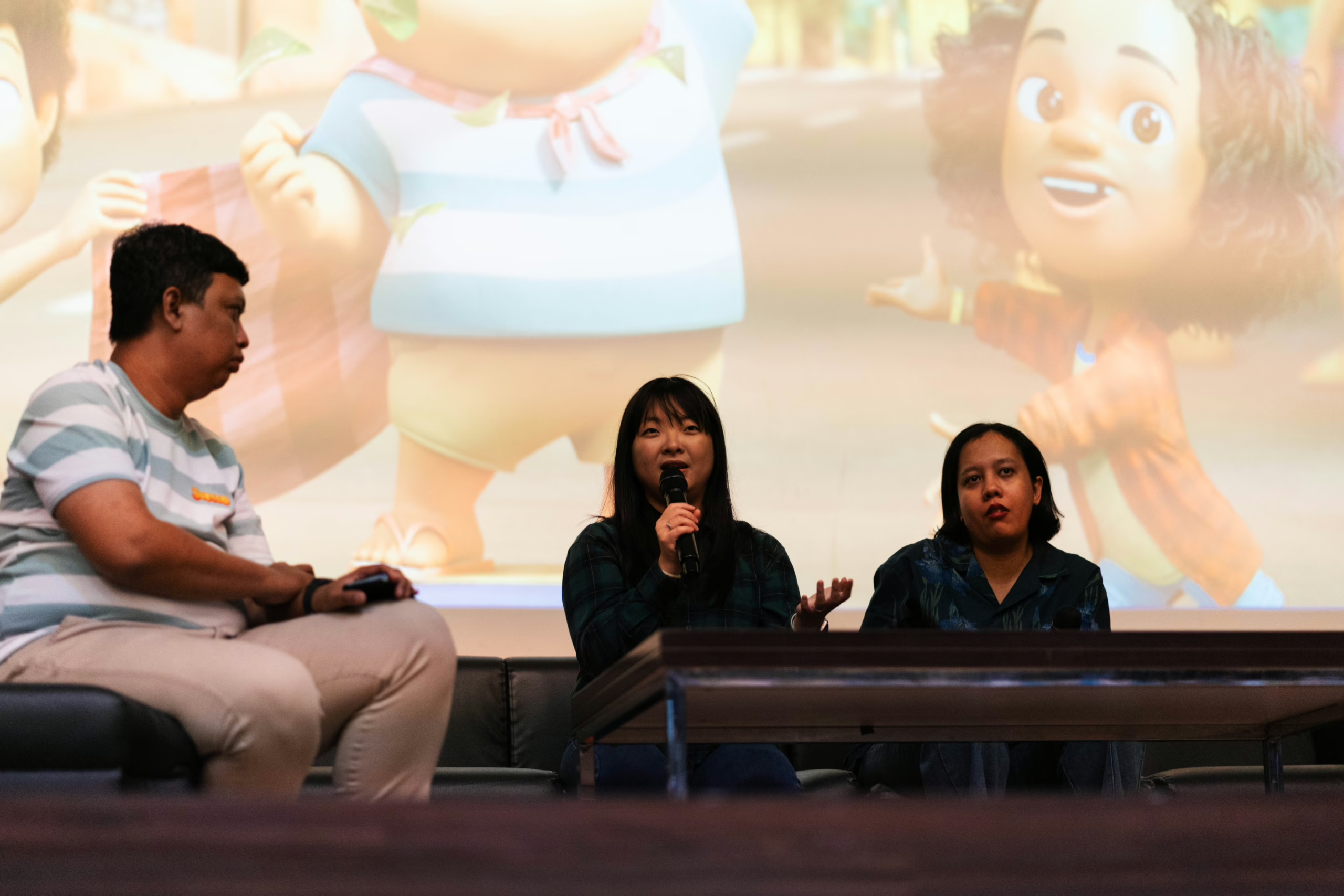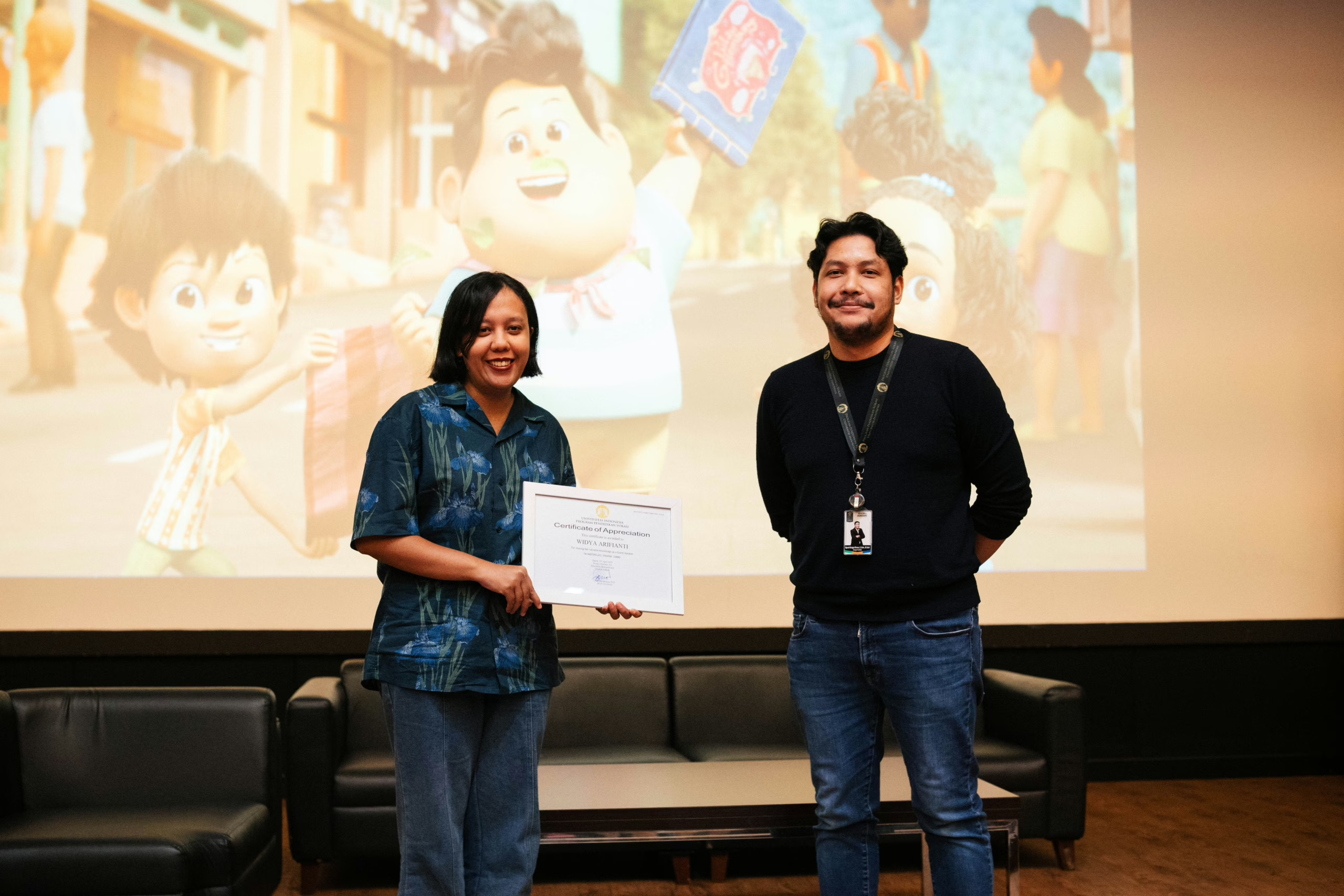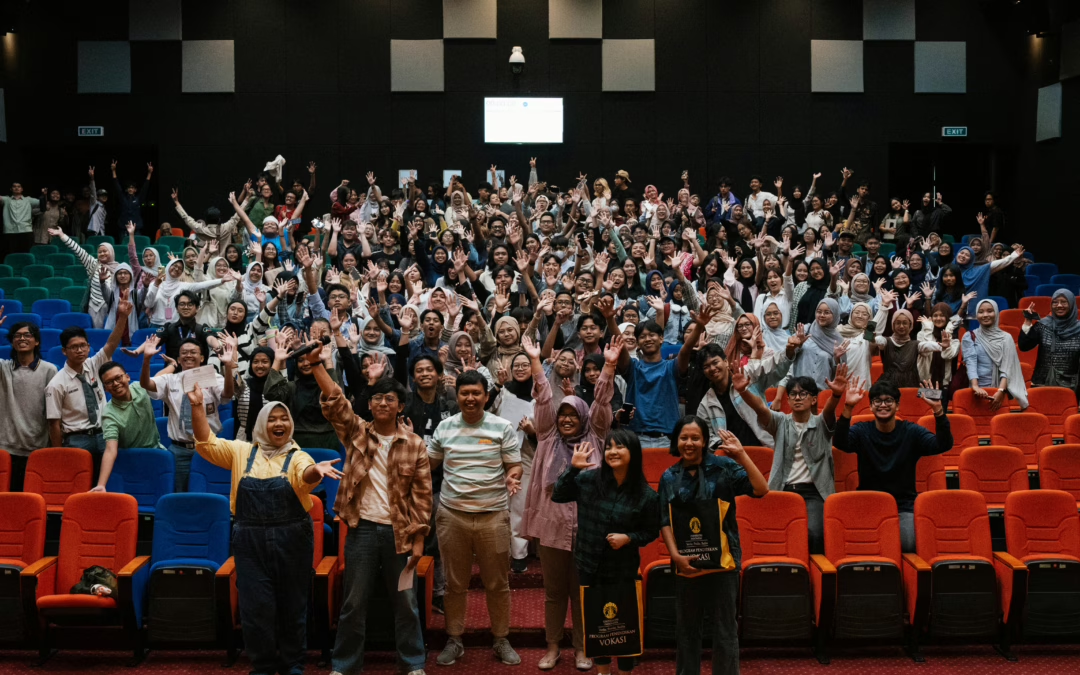Depok-Amidst the Indonesian creative industry’s growing presence on the global stage, local animated films are gaining increasing prominence. Animation has become a powerful storytelling medium, representing culture, conveying values, and even serving as a creative playground for Indonesian visual artists. Animated works by Indonesians are now able to touch millions of viewers and convey profound messages through a visual medium rich with innovation. This was the main focus of a public lecture held by the Media Production study program, Vocational Education Program, Universitas Indonesia (UI), in collaboration with Visinema, entitled “The Creative Process of a Jumbo Animated Film: From Idea to the Big Screen” at the UI Vocational Auditorium on April 15, 2025. This event served as an inspiring space for students, particularly Media Production students studying the Fiction Film Production course, to understand the dynamics and challenges of feature-length animated film production in Indonesia.
Padang Wicaksono, S.E., Ph.D, Director of the UI Vocational Education Program, expressed his appreciation for Visinema’s presence as a collaborative partner and for sharing knowledge with the film industry. “The Universitas Indonesia is committed to supporting the creative industry, one of which is the film industry. Today, we are proud to be able to present this collaboration. Thank you to Visinema for opening a direct learning space for our students,” said Padang.
The UI Vocational Media Production Study Program is committed to producing work-ready graduates in the creative media field through a practice-based curriculum. Collaborations with industries such as Visinema are part of the effort to enrich students’ insights and networks within the industry.
This public lecture featured two keynote speakers from behind the scenes of the animated film “Jumbo,” which is currently a hot topic for its achievements in the national film industry. The two speakers were Novia Puspa Sari, producer of “Jumbo,” and Widya Arifianti, screenwriter for the film. Both shared their behind-the-scenes creative journeys of “Jumbo,” a project that spanned nearly five years and involved over 420 creators from various cities across Indonesia.
 (Photo: Discussion session between Jumbo creators and students)
(Photo: Discussion session between Jumbo creators and students)
In her presentation, Novia highlighted the urgency of providing educational and child-friendly content in Indonesia. According to data from the Central Statistics Agency, of Indonesia’s approximately 280 million population in 2023, there will be approximately 88.9 million children under the age of 18. “Looking at this data, it turns out that educational programs for children are still less than 1%, and feature-length animated films for children are only available in cinemas on the fingers of a handful each year,” Novia said.
Visinema, through its family content studio division, is committed to addressing this need. “Jumbo” was born from this collective spirit, which Novia calls “a film for us, our children, and the children within us.” Although currently only showing in Indonesia, the film has reached more than 3.5 million viewers with 3,700 screenings in cinemas nationwide as of its 15th day of release. “Jumbo” is also scheduled to be released in 17 other countries, including Malaysia, Singapore, Russia, Turkey, Kazakhstan, and others.
Meanwhile, Widya invited students to delve into the world of screenwriting. She shared her experience creating the premise and story structure for “Jumbo,” which was built with an emotional, simple, yet powerful approach. Widya said, “A good story always starts with a goal and obstacles that lead to conflict. We wanted to create a joyful world in difficult times, like the pandemic, which is precisely what gave birth to ‘Jumbo’.”
Widya also shared a story structure formula using the traditional game of peek-a-boo: Ci as the introduction (25%), Luk as the conflict (50%), and Ba as the resolution (25%). Through this framework, Widya emphasized the importance of each part of the story, as well as the role of revision as a key to sharpening ideas. “Animation is a medium that combines traditional art and cutting-edge technology. Through ‘Jumbo,’ we want to prove that the work of the nation’s children can compete globally,” concluded Novia. She hopes that this film will not only entertain but also inspire aspiring young Indonesian filmmakers and animators.
 (Photo: Giving of a certificate to Widya Arifianti, screenwriter for the film Jumbo, by Ngurah Rangga Wiwesa, M.I.Kom., Head of the Media Production Study Program)
(Photo: Giving of a certificate to Widya Arifianti, screenwriter for the film Jumbo, by Ngurah Rangga Wiwesa, M.I.Kom., Head of the Media Production Study Program)
The final session of the public lecture featured a talk show with the two speakers, moderated by Wisnu Dwi Pratama, a practicing lecturer in the Fiction Film Production course, who is also a film producer at Visinema. The discussion touched on the challenges of long-distance collaboration between creators during production, including the importance of regular communication and trust in a shared vision. Dirgham Ageng Diraja, one of the students attending the public lecture, revealed that he gained a lot of new knowledge about the creative process behind Indonesian animation. “The creative process of animation apparently requires a lot of energy and time to produce special work. The presence of industry practitioners sharing their experiences provides a platform for us to develop creative and critical thinking before entering the industry later,” said Dirgham.
The collaboration between the UI Vocational Media Production study program and Visinema in this public lecture reflects UI’s commitment to its vision as an Excellent and Impactful institution. Through a practice-based approach and direct engagement with the creative industry, UI, through its Vocational Education Program, is committed to producing technically competent graduates and also encouraging the birth of relevant, educational, and globally competitive works. Just as the film “Jumbo” is clear evidence that the synergy between academia and industry can have a significant impact on society and the advancement of Indonesian culture.


